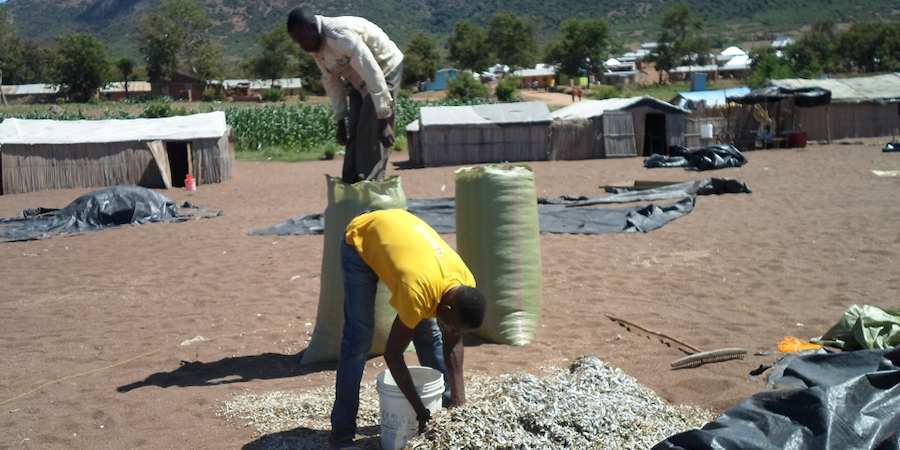Reducing loss and waste along the aquatic food value chains in the United Republic of Tanzania
By Joseph Luomba
The United Republic of Tanzania is well endowed with rich marine and inland fisheries. The marine fishery in the country has a territorial sea of about 64,000km2 and a coastal line of 1,424 kms. The Exclusive Economic Zone (EEZ) is up to 200 nautical miles covering an area of 223,000 km2. The inland water covers nearly 61,500 km2 equivalent to about 6.5 per cent of the total land area. Of this, 80% is occupied by major Lakes Victoria (51%), and Tanganyika (41%), Lake Nyasa (20%). The fisheries sector in the United Republic of Tanzania is estimated to employ directly over 200,000 people working as vessel owners and crew members. The sector also employ almost 4 million people working as fish traders, processors, agents and gear makers. Fisheries is also important in food security, foreign exchange, revenues and contributes between 1.3-2% of the Gross Domestic Product (GDP), much of these contribution come from the small scale fisheries.
The fisheries sector is faced by numerous challenges, one of which is food loss and waste (FLW) in various fish species. These losses include physical loss, quality loss, nutrition loss, economic or financial loss and market force loss. However, much of the fish loss and waste in fisheries in the United Republic of Tanzania has been on examining physical loss, quality loss and market forces loss. The FLW is experienced throughout the value chain from capture-processing-storage-transportation and marketing. The major causes of FLW are technical, financial, infrastructure and management constraints.
Various literatures estimate post-harvest losses to be high in small pelagic from marine fishery and Rastrienobola argentae a silver cyprinid fish locally known as ´Dagaa´. Recent studies indicate that post-harvest losses occur in other important fish species that are major sources of livelihoods to people within the riparian regions. For example, in Lake Victoria which contributes over 60% of the total fish produced in the country, it is estimated that fresh Nile perch has a loss of 11%, smoked perch is 18.2%, salted Nile perch is 8.5%, Dagaa 14% while fresh marine fish is estimated at 4.9%. Due to the threats posed by FLW on fisheries dependent communities as well country initiatives to addressing challenges of food security and nutrition, there have been various FLW reduction initiatives implemented in the United Republic of Tanzania. These have been implemented in all the water bodies through the various projects such as Lake Victoria Environmental Management Project (LVEMP), Implementation of a Fisheries Managenent Plan (IFMP), Marine and Coastal Environment Management Project (MACEMP), South Western Indian Ocean Fisheries Governance and Shared Growth (SWIOFISH) and Trade and Agriculture Support Programme (TASP). Specifically these projects aim at improve and strengthen various infrastructures including constructions of racks for drying sardines, improved landing sites for landing, offloading and primary auctioning fish in Lake Victoria, Lake Tanganyika and Marine. Despite these initiatives, FLW has remained a challenge that continue to threaten the United Republic of Tanzania's national vision on addressing hunger and well-being as well as Sustainable Development Goals (SDG) number 2 and 3 on zero hunger and good health and well-being.
In this regard, there is a need for a paradigm shift to tackling this challenge. The Food and Agriculture Organization of the United Nations (FAO) through Component 5: “Enhance the sustainable utilization of fisheries and aquaculture products and its contribution to livelihoods and food security” of the Norad-funded project “Responsible use of fisheries and aquaculture resources for sustainable development” is supporting the Government of the United Republic of Tanzania to reduce FLW in aquatic food value chains.
Unlike other initiatives, this project takes a multi-dimensional and multi-stakeholders approach involving policy, technology, skills and knowledge, services and infrastructure, regulatory environment, social and gender equity, and good linkages to and understanding of markets. This approach is captured by the Voluntary Code of Conduct for Food Loss and Waste Reduction (CoC).
Learn more about the project and view the fact sheet here.

